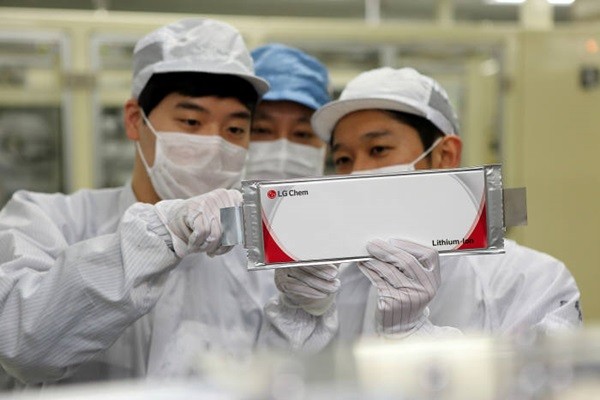Stability of supply and demand for major battery materials will be improved even more for LG Chem as it decided to construct a new cathode material plant that can produce 60,000 tons of cathode materials annually in Gumi-si as part of ‘Coexistence-Type Gumi Employment’ investment agreement. It will be able to improve its competitive production cost and rate of localization of materials by strengthening its vertical integration system.
Cathode material is one of four major materials of a lithium-ion battery along with anode material, separator film, and electrolyte and it affects battery capacity and output and is an important raw material that is responsible for about 40% of material cost.
LG Chem has put in a lot of efforts in internalizing cathode material. It is currently operating cathode material production line within its plant in Ojang and it is also producing cathode materials from its plant in Iksan by acquiring GS EM’s cathode material business in 2016. In 2018, it decided to establish a joint precursor and cathode material production corporate that will produce 40,000 tons of precursors and cathode materials annually with Huayou Cobalt that is world’s biggest cobalt refining business.
By deciding to construct a new cathode material plant in Gumi, LG Chem now has three cathode material production plants in just South Korea alone. It will start construction sometime during next year and it is looking to produce cathode materials from its new plant at the end of 2022. In 2024 when all investments are made, its new plant will have annual production capacity of 60,000 tons of cathode materials. This amount can manufacture batteries for about 500,000 high-performance electric vehicles that have a mileage of at least 380km.
“Not only can we expand amount of internal supply and demand of important raw materials of a battery by having three production plants, but we will also be able to establish stable supply network and strengthen our competitive production cost.” said a representative for LG Chem.
Amount of remaining balance from car battery orders surpassed $92.9 billion (110 trillion KRW) at the end of the first quarter for LG Chem. To deal with these orders, it is planning to increase production capacity of electric vehicle battery from 35GWh to 110Gwh by next year and eventually have production capacity of 250GWh by investing $8.44 billion (10 trillion KRW) for four years. As a result, it also needs to increase production of cathode materials.

LG Chem usually receives cathode material from Nichia in Japan and LANDF and POSCO Chemical in South Korea and it has internalization rate of cathode material at 20%. Although its partners are quickly increasing their production capacities, it is planning to double the production capacities of its plants in Gumi and Cheongju as its partners cannot make up amount of cathode materials needed.
“We are currently producing 20% of necessary amount of cathode materials on our own and we get rest of the 80% from our partners in South Korea, Japan, and China.” said COO Jung Ho-young of LG Chem during a conference call for the announcement on the second quarter’s result. “We are planning to increase internalization rate from 20% to 35% in the future.”
LG Chem predicts that half of cathode materials that it uses in the future will be made by itself and other South Korean businesses in three to four years.
LG Chem is also working fast to secure next-generation technologies on cathode material. It is planning to reduce percentage of cobalt of its cathode material under 10% to improve energy density and output by 2022 after going through NCM622 (cathode material with nickel, cobalt, manganese ratio of 6:2:2) and NCM712 and eventually use NCMA (Nickel, Cobalt, Manganese, Aluminum) cathode material.
“We are going to increase our competitive edge in battery industry even more by accelerating improvement in amount of localization through internalization of major materials starting with our investment in our plant in Gumi.” said Vice-Chairman Shin Hak-cheol of LG Chem. “We are also going to dour best to establish a foundation where we can grow with local societies by vitalizing local economy and creating jobs.”
Staff Reporter Jung, Hyeonjung | iam@etnews.com